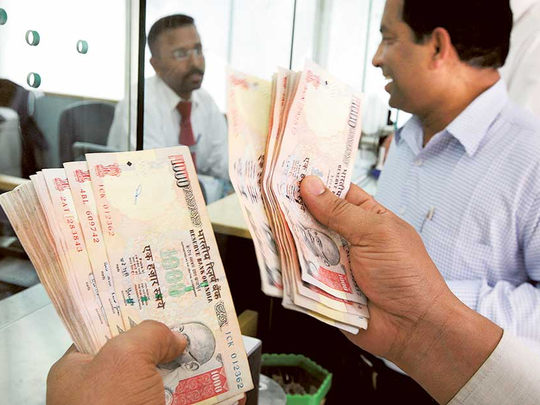
Mumbai: The inflation-fighting credentials of new central bank chief Urjit Patel may help shore up the rupee as maturing deposits trigger a flood of outflows.
Patel, currently a deputy governor of the Reserve Bank of India, faces his first major test as an estimated $26 billion in deposits raised from non-resident Indians in 2013 starts to fall due next month, of which the RBI sees $20 billion leaving the country over four months. The rupee has fallen 0.3 per cent this month to 67.1750 per dollar in Mumbai on Monday, taking its 2016 decline to 1.5 per cent, Asia’s worst performance after China’s yuan.
“Continuity is the relief,” said Vishnu Varathan, a senior economist in Singapore at Mizuho Bank Ltd, which sees the currency trading at 67.5 by year-end. “Near-term diminished prospects of an interest-rate cut may dent the strength of inflows, but quick realisation of macro stability and consequent risk-adjusted return should restore a fair amount of rupee strength.”
The rupee has delivered total returns of about 28 per cent during Governor Raghuram Rajan’s three-year term that ends September 4, the best performance among major Asian currencies. Patel was his right-hand man as he spearhead the biggest reforms in the central bank’s 81-year history, including implementing an inflation target and preparing the groundwork for the formation of a policy-setting panel.
While speaking in Mumbai on Friday, Rajan said he’s confident Patel will ably guide the panel on inflation targets, adding that while July’s 6.07 per cent jump in consumer prices was high, he had no doubt they will fall in the months ahead.
“The appointment of Urjit Patel as the next RBI governor is an important medium-term positive for the rupee given his focus on inflation-targeting,” Standard Chartered Plc strategists, including Robert Minikin, wrote in a note Thursday. They said the RBI will continue to contain rupee volatility and that foreign investors’ positioning in Indian markets “remains light compared to the rest of the region.”
The bank boosted its year-end rupee forecast to 66.25 a dollar from 68 previously, more bullish than the median of 68.50 in estimates compiled by Bloomberg.
‘Preemptive buying’
The RBI raised funds from non-residents in 2013 to support the rupee after it plunged to an all-time low of 68.845 a dollar. Of the total deposits falling due, 81 per cent mature in October-November, Yes Bank Ltd. estimates. To prepare, the central bank had been buying dollars in the forward markets and has built up record foreign-exchange reserves. It added $1.35 billion to its war chest in the week through August 19, taking the stockpile to $367 billion.
“The rupee has underperformed other Asian currencies year to date,” said Mitul Kotecha, head of Asia currency and rates strategy at Barclays Plc in Singapore. “This may reflect some preemptive dollar buying by the RBI ahead of the upcoming redemptions.”
Changes afoot
Patel will take over after a period of relative stability in the local currency. Expected price swings over three months in dollar-rupee plunged to an eight-year low on August 8.
The RBI itself though is going through a period of upheaval. The new governor will oversee the roll-out of an independent monetary policy committee to decide interest rates, expected to be formed this year.
“Dr Patel represents continuity at a key time when a new monetary policy framework has been agreed on but not yet implemented,” said Rajeev De Mello, Singapore-based head of Asian fixed income at Schroder Investment Management Ltd, which oversaw $460 billion of assets globally as of June 30. He expects fewer rate cuts.
Prime Minister Narendra Modi’s government this month also agreed to a target of 4 per cent inflation through 2021, while allowing fluctuations in a 2 per cent to 6 per cent band. Consumer prices in July breached the upper bound of the RBI’s target range, rising the most in 23 months. Stable inflation would boost the appeal of Indian yields, already the highest among major Asian markets. The yield on the note due January 2026 rose three basis points last week to 7.13 per cent. It was at 7.14 per cent on Monday.
“Patel’s appointment ultimately is likely to bode well for the rupee,” said Kotecha. “The fact that he has been closely allied with Governor Rajan’s policies and played a key role in reforms suggests that policy continuity is highly likely.”












